Gigabyte K8NNXP-940: Built on Athlon64 FX51 Strengths
by Wesley Fink on October 9, 2003 11:52 PM EST- Posted in
- Motherboards
Gigabyte K8NNXP-940: Board Layout
The Gigabyte has one of the best board layouts that you will find with few tradeoffs that can make installation more difficult, and one glaring fault in the layout, which may be unavoidable. The full ATX-size motherboard allows placement of connectors and ports in their best location.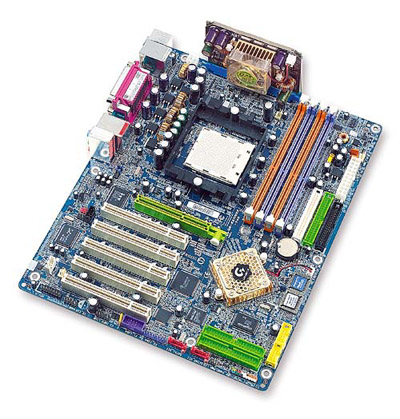
The clear blue board with rounded corners is instantly recognizable as trademark Gigabyte. As you can see, the single-chip nForce3-150 gives designers a little more room for a better board design.
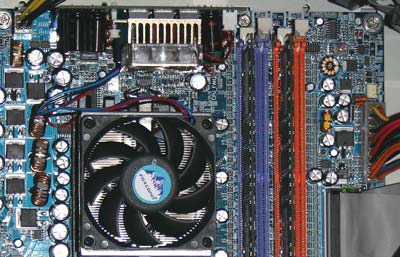
Unlike Athlon XP motherboards, we see a standardized ATX plus 12V connector arrangement on the Athlon64 and FX51 boards we have seen. This is identical to the power connector requirements of current Pentium 4 systems. We generally prefer the connectors together on the upper right of the board, but Gigabyte's placement of the 20-pin ATX to the upper right and the 12V at the top left of the processor socket is acceptable and should allow for decent cable placement.
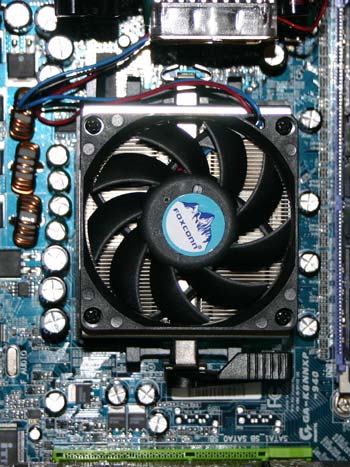
There is plenty of room around the north-to-south sides of the CPU socket, even with the new and much larger Athlon64/64FX heatsink “cage”. Gigabyte has placed the CPU socket away from the top edge to make room for the DPS-K8 power module.
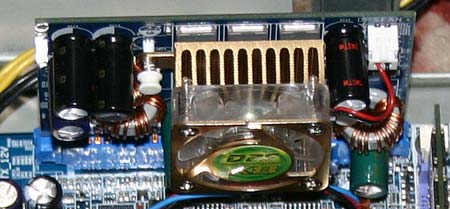
The location of the DPS board on the top edge of the motherboard can be a potential problem in some case designs. It works well in full-tower cases, but many case designs have a downward facing fan to cool the CPU and will be blocked by the DPS-K8 module. With the careful attention to placement of components on the K8NNXP-940, we assume that Gigabyte must have a good reason for choosing this location. You could probably also argue that this location assures the power board stays cool.
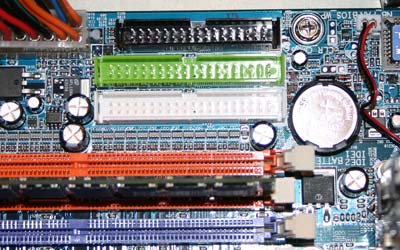
The Floppy connector and Primary/Secondary IDE connectors are all in ideal positions. They are in our preferred position above the midline of the board and to the right of the memory slots. This position on the top right edge of the board works well with cable arrangements in almost any case.
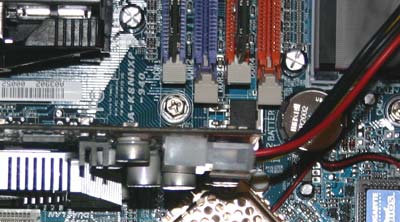
The memory slots are arranged so they do not interfere with the AGP card in any way. Changing or adding memory is easy with this arrangement. Gigabyte also uses their EZ-fix AGP lock, which is one of the better designs for securing the AGP card.










35 Comments
View All Comments
juc - Friday, October 10, 2003 - link
can you try and put in a lower clock opteron and see what type of overclocking you can do w/ it?, is the regular 14x opteron unlocked? it would be nice if it was.Reflex - Friday, October 10, 2003 - link
#1: A RDRAM version would completely eliminate the advantage of having an on-die memory controller on the CPU as it is very very high latency by design. The A64 thrives on very very low latency/high IPC, and RDRAM does not provide that.Honestly, what would be truly ideal is a QDR solution. But everytime I hear about it being close nothing seems to come of it. Too bad...
Anonymous User - Friday, October 10, 2003 - link
Considering the performance gain, money ain't that important :-)Anonymous User - Friday, October 10, 2003 - link
#1,Samsung PC-3200 512 MB DDR SDRAM $125
Samsung PC-3200 512 MB ECC Reg. DDR SDRAM $174
+49
Corsair XMS3200 PC-3200 512MB DDR SDRAM $175
Corsair XMS3200 PC-3200 ELL 512MB DDR SDRAM $220
Corsair XMS3200LL-RE PC-3200 ECC Reg. 512MB DDR SDRAM $235
+15 (+60 compared to slower timings)
completely unmeaningful to anyone with the money to buy an fx.
Anonymous User - Friday, October 10, 2003 - link
Looks like a cool mobo, and an amazingly fast CPU, but . . .Who's going to buy one of these!?!?!?
The price you'll spend on memory put's this way out of most people's price range! And before you yell at me for saying that, look up pricing for registered modules!
You could probably buy an awesome Athlon 64 system now, then upgrade your mobo and CPU to FX when the 939 pin version comes out, and still spend less money than paying this ridiculous premium on memory. Plus, it would be upgradable to future FX chips, not an unsupported beast. Anyone remember socket 423?
Say goodbye to the idea of 'surpassing the 4Gb memory limitation,' unless you have like $10,000 to spend on memory!
My real question here is why, when the Athlon 64 (non-FX) is such a success, would they make this strange beast?
What I would LOVE to see (I know you're going to hate this one) is a really tight RDRAM chipset ready when the 939-pin chipset comes out.
What do you think? Quad Channel 1200Mhz RDRAM on the new FX? Ain't gonna happen, but I can dream.